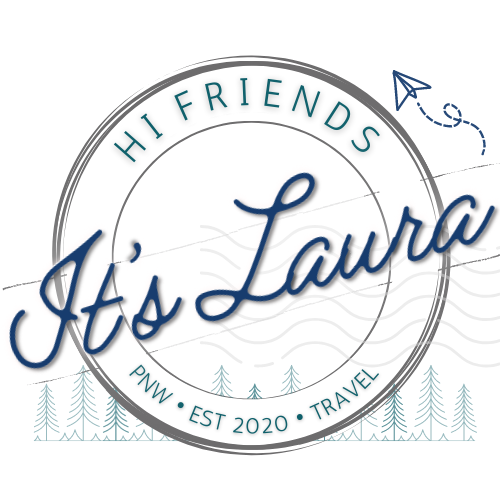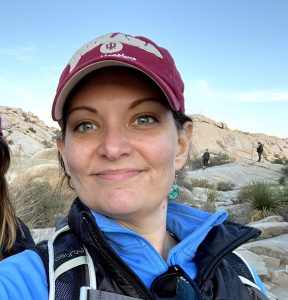Cycling through Alsace on the Route des Vins is an exceptional experience. I’m so glad I took my tour with Evan at Beercycling. I had a lot of questions about a cycling trip and Alsace before I went, and I got even more questions on Instagram while on my trip. Here are the top thirteen things you should know before taking a cycling trip through eastern France and wine country.
Disclosure: Some of the links below may be affiliate links, meaning, at no cost to you, I will earn a commission if you click through and make a purchase.
In July 2024 I went on the Alsace Wine and Beer tour through the Grand Est province of northeastern France, a two and a half hour train ride from Paris (save on train tickets from Paris!). We cycled from Strasbourg to Colmar over 163 miles, and stopped at medieval towns and French vineyards like Eguisheim and Ribeauvillé.
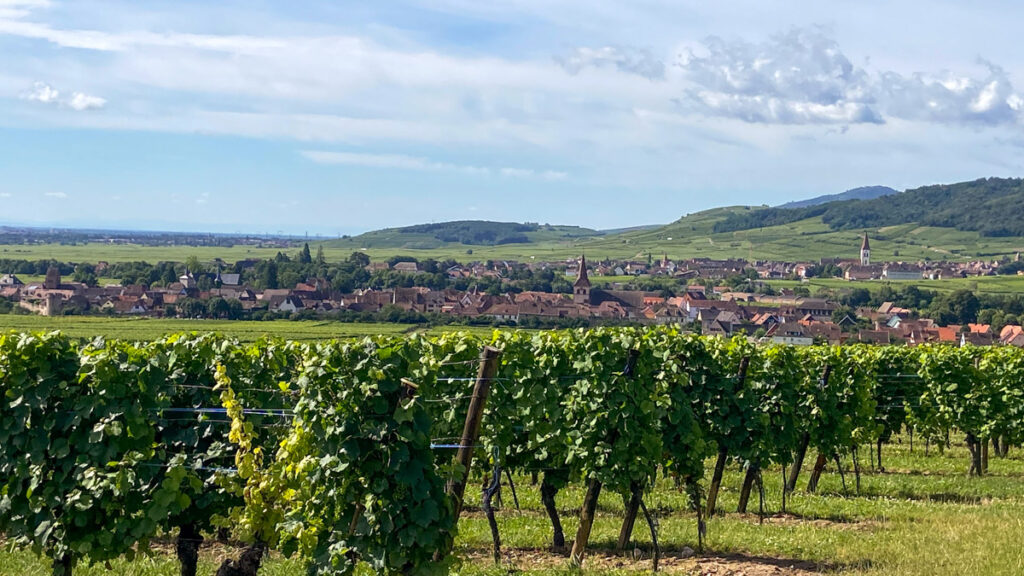
What is the day to day of a wine cycle tour like?
Each day we would wake up and eat breakfast at the hotel. We were spoiled the first two mornings at the Hotel Tandem in Strasbourg. It had the most magnificent breakfast I’ve ever seen, with dozens of handmade cakes and pastries to enjoy. Most days we had some version of eggs, deli meat, cheese, croissants and yogurt. Plus coffee. We’d load up our bikes and be on the road by around 8:30am.
The daily ride would include a stop every hour or so for water, breaks, or snacks. Evan provided us all with a water bottle for the trip, and he had large liters of bottle waters to refill us as needed. We usually stopped late morning for a beer or wine tasting. Several included a tour of the facility or vineyard, too. We’d get back on the road for another hour, and then stop for lunch at a park. Lunch was provided each day and was usually a baguette sandwich. Evan usually had chips and cookies for snacks after lunch.
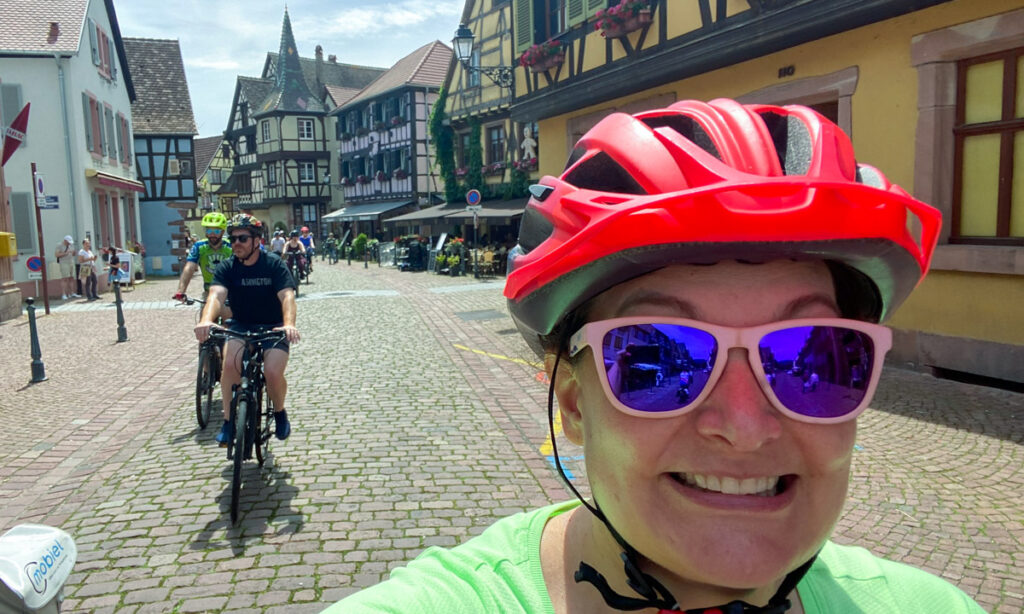
The afternoons would see us back on the bikes to another wine or beer tasting to end the day. We’d usually be able to buy another pint or glass to enjoy the afternoon. Then we’d get back on the bikes to the hotel we’d stay at for the night.
We had one rest day on the trip, which happened to coincide with the Fourth of July. Our group of girls went wine tasting all day at local wineries. It made it a little tough to wake up the next day and get back on the bike, however.
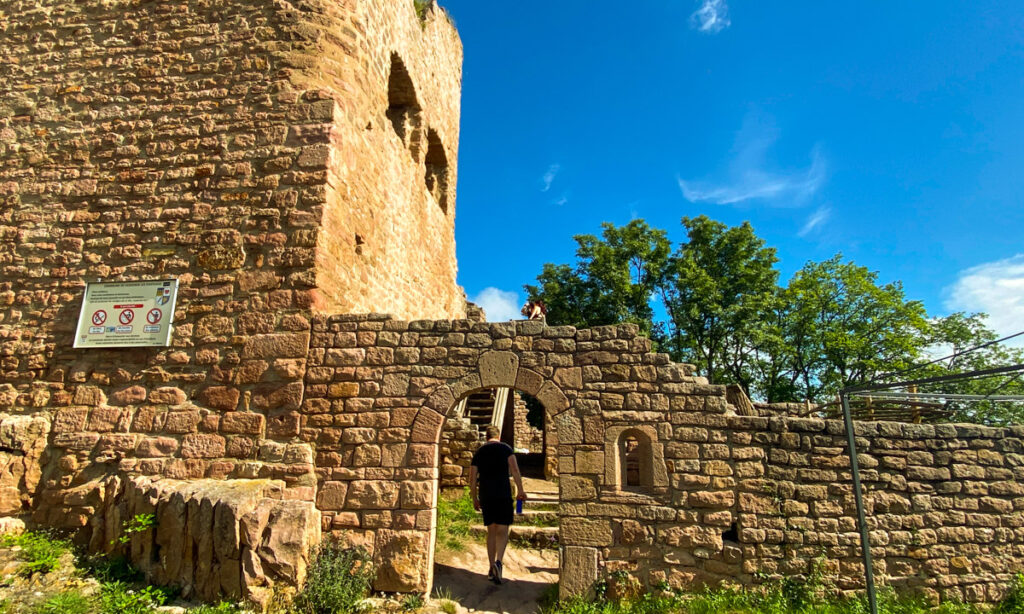
The cycling route we followed was the Route des Vins, or Wine Route, a scenic, 105-mile-long trail running north to south. Established in 1953, it passes through medieval villages and vineyards, going through more than 100 wine-growing towns. Most people follow the route in their cars, driving from medieval town to medieval town. We rode the route, following country roads and bike paths each day.
I’m sure you have questions about the logistics of the trip, so I’ll answer some popular questions below.
What is Beercycling, and how does it work?
Beercycling is the tour group run by a friend of my friends, Evan. He started the group a decade ago because he wanted to share his love of cycling and beer with others. He operates tours throughout Europe focused on beer tasting. This was the first one to include wine tastings, but I’m sure it won’t be the last.
The tour groups are usually no more than 12 guests, and include tastings, breakfast, lunch, bike rental, van support (on most tours), and lodgings.
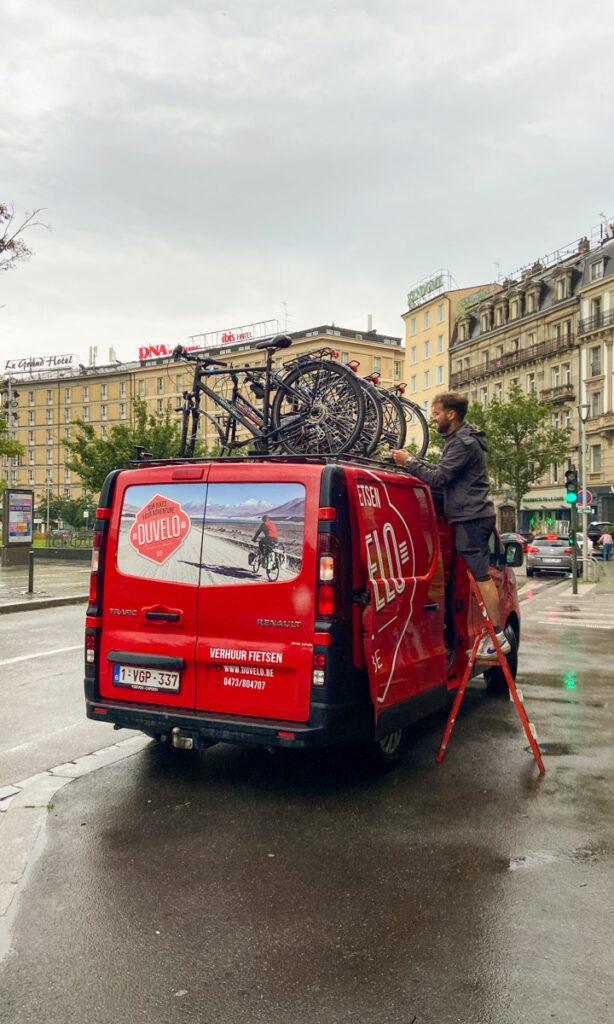
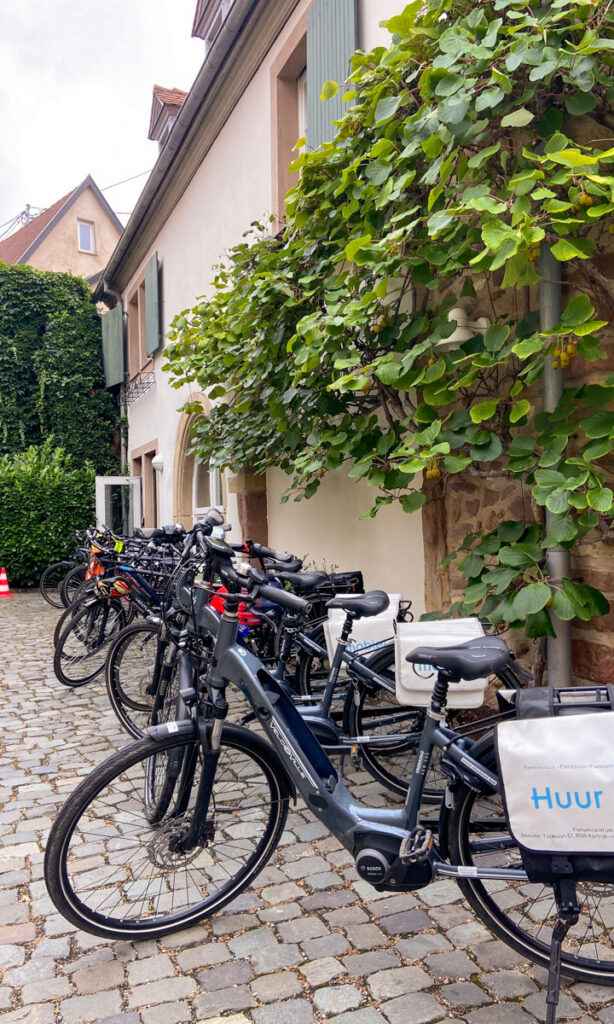
Van support is provided to transport your luggage to the next hotel each night. Our van driver Tom was also there to transport riders if they did not feel up to riding each day. He even took one woman back to Strasbourg to pick up her wallet that had been found along the route! The van is also there to allow for quicker changes of flat tires.
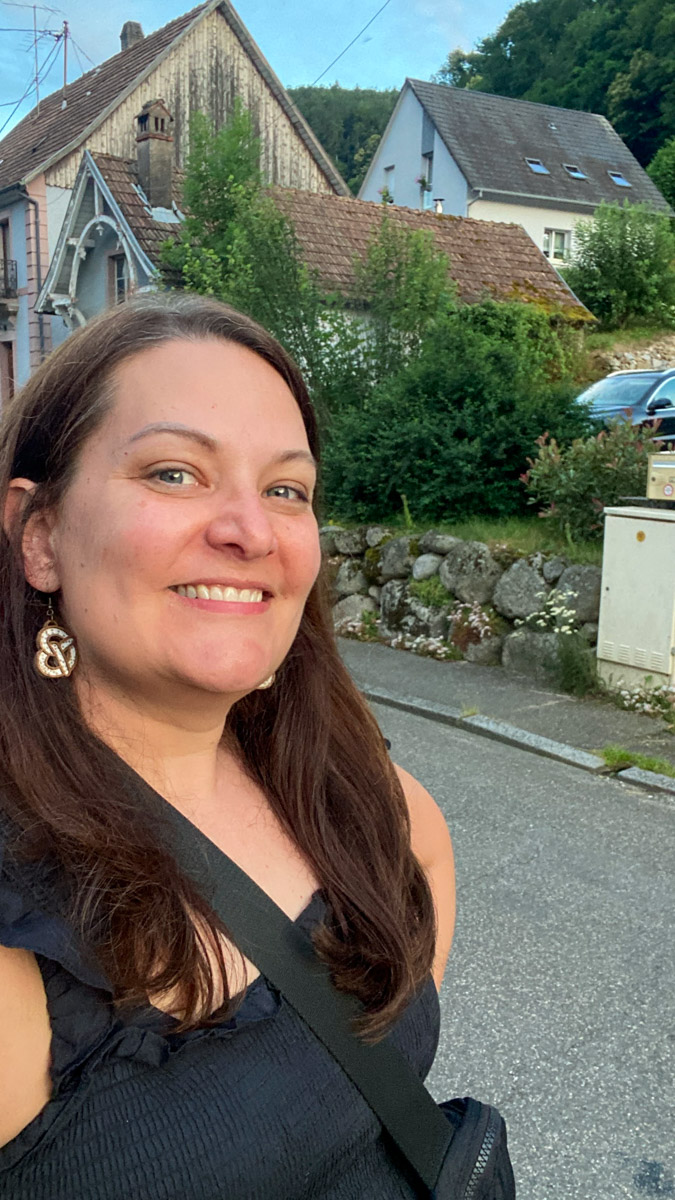
Don’t miss a moment of the  Sparkling Summer
Sparkling Summer 
Read all about Paris, Taylor Swift, hiking in the alps, getting slightly lost in the Alps, cycling through wine country, drinking through wine country, and cycling AND drinking through wine country. Catch every post on my Sparkling Summer on Hi Friends It’s Laura.
Read MoreHow challenging was the cycling route in Alsace?
Evan had said this was 3 out of 5 difficulty, and folks did not need to bring clip in pedals unless they wanted to. I’m not an avid cyclist, so I rented an e-bike on this trip. There were hills every day, and we ended up riding in the rain for the majority of the trip. I’m glad I had an e-bike, although three of my close friends on the trip rode regular bikes and enjoyed it.
If you have a moderate level of fitness, you could do this trip on an e-bike. If you are a very avid cyclist, you could do this on a regular bike. There were a couple folks on our tour who had not trained much or ridden much, and they struggled each day at the back of the pack. That said, there is a sweep, so you are never riding completely alone. The great thing about a van supported tour is that you can always jump in the van!
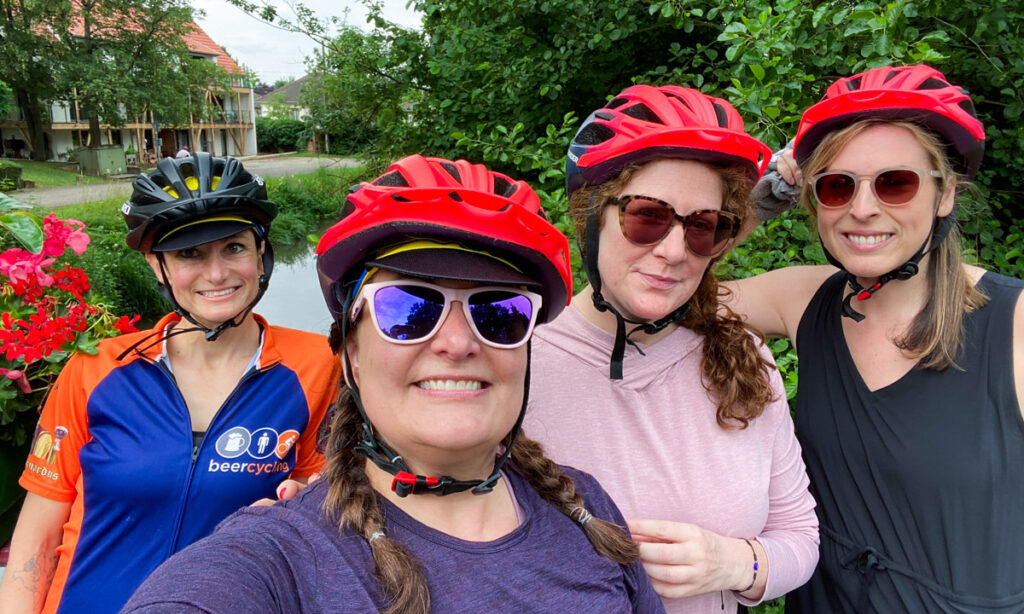
What should I pack for a Beercycling or cycling tour in Alsace?
The nice thing about having van support is that you can pack a large suitcase for your trip. The downside is that hotel rooms in small Alsatian inns are not large, and your suitcase can take up a lot of that space! For my trip, I was traveling to Paris, Zurich, a Taylor Swift concert, the Alps, AND a cycling trip so I packed everything. Like, two-costumes-for-Taylor-level everything.
Most of my wet and cold weather gear I also wore when I was in Zion last February. You can see me modeling it with a puffer underneath while it was raining and snowing in Zion in my IG Reels.
Here is what I could not live without:
- Raincoat and rain pants: I wear the REI Co-op Rainier raincoat and pants. The pants were key because it rained a lot and they kept my legs dry. Someone on our trip did not have a waterproof coat, so they had to buy one at North Face in Strasbourg before leaving.
- Cycling hat: I made custom cycling hats for everyone for my friend’s birthday! I also had a ballcap to rotate if needed. One of the guides had a waterproof neon orange cover for her helmet.
- Sunglasses: Goodr sunnies so I could knock them around.
- Sunshirt: REI Co-op sunshirt was perfect for sunny and slightly cool days
- Wool long sleeved shirt: Even though we went in July it was still chilly in the mornings. Mine is from costco.
- Sweatshirt: I ended up putting this on during tastings and lunches to stay warm.
- Workout tops: I brought two tanktops and one tshirt in wicking material. Some folks brought cycling jerseys.
- Cycling pants: I bought some on Amazon and HATED THEM. I ended up wearing my regular leggings or shorts most days.
- Sunblock
- Electrolytes and vitamin C packets daily
- Old sneakers: A lot of folks wore clip-in cycling shoes. My shoes got pretty muddy by the end of the trip.
- Wool socks: I’m a ride-or-die Smartwool socks fan. I had three pairs of wool socks to rotate. I always kept a dry pair in my panniers as well.
- Packable grocery tote bag: Helpful to pack my day to day stuff in my pannier
- Two nicer outfits for dinners/day off (sundress and skirt/tee combo)
- Single packets of Tide detergent: none of our hotels had laundry, but I washed my workout clothes in the sink every other day
- Portable phone battery bank: Strava just eats up that battery and data. I would have also used Airalo as an e-sim instead of my regular phone plan.
- Copy of Rick Steves France book, a must-have for the area
- Copy of Lonely Planet France book, another must-have
- My Kindle: full of books to read about the region. I compiled an entire Paris/Alsace list on Bookshop.org of what I read!
- Revlon Airbrush with French plug: This is a game-changer. I ordered it from French Amazon to a locker near my Loire Valley hotel when I went two years ago. It also partially worked in Switzerland!
- If you can find a copy of Randos Bieres en France, or Randos Biere Grand Est books, these are specifically about Beer Hikes in the region.
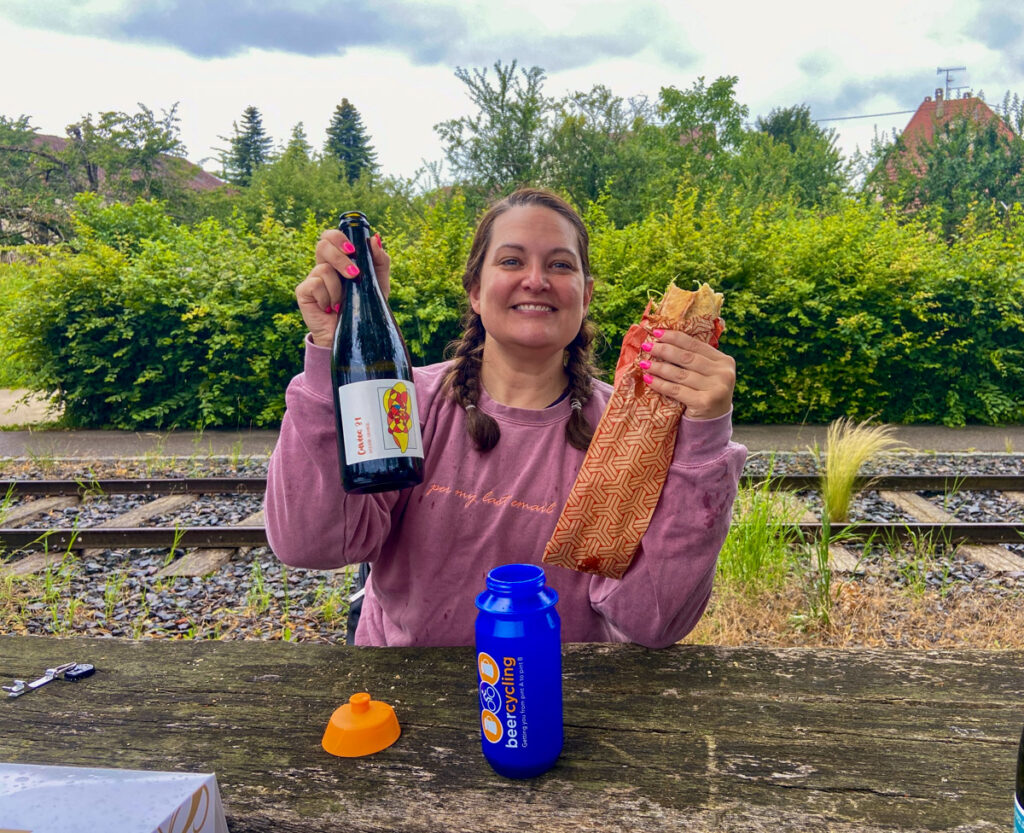
What do I wish I had packed for my French cycling tour?
I asked this question of the girls I rode with on my trip, and we agreed that we would have packed a lightweight puffer or cute warm jacket. It was around 60 degrees most days of our trip, and we got cold each day when we stopped riding for lunch, especially in the rain. A cute fleece or lightweight puffer would have been clutch.
I also wish I had brought my Nite-Ize Wraptor phone holder for my handlebars. I absolutely left it at home and regretted it! I used my beltbag to hold my phone when I didn’t have side pockets.
Packable clotheslines show up on my For You Page often, and I wish I had brought one to dry my workout gear overnight.
What should I leave at home or not bring for a cycling trip on the Route des Vins?
- Fancy shoes or clothes: I had a pair of casual sandals and my all whites/Adidas Stan Smiths. This was as fancy as I got.
- Jean jacket: I wore this because it was the heaviest layer that I had. I would have been better off with a fleece or lightweight puffer.
- Your bike: It’s much easier and probably cheaper to rent a bike locally than ship it on the plane
- Cycling pants: I HATED mine from Amazon. Bring ones you like or just bring a padded seat cover instead. This is not the time to try out stuff for the first time. Lesson learned.
Do I need to take a guided tour to explore the region on a bike?
No, you can explore the Route des Vins without a guide. It’s possible to rent a bicycle in Strasbourg, Colmar, Riquewehr or other small towns, and ride out on day trips. You could also bikepack from town to town, carrying your luggage along with you. You can also drive or take a wine tasting bus tour along the route.
The cycling route is well marked, and much of the route is on country roads or bike paths. However, there is not just one cycling route, it’s a series of roads so you can take many different routes and find yourself lost. The Eurovelo Route 5 covers a cycling path from Strasbourg to Colmar, although it’s part of a much longer route from Barvaux, Belgium, to Lucerne, Switzerland. I would recommend a GPS app to guide your route.
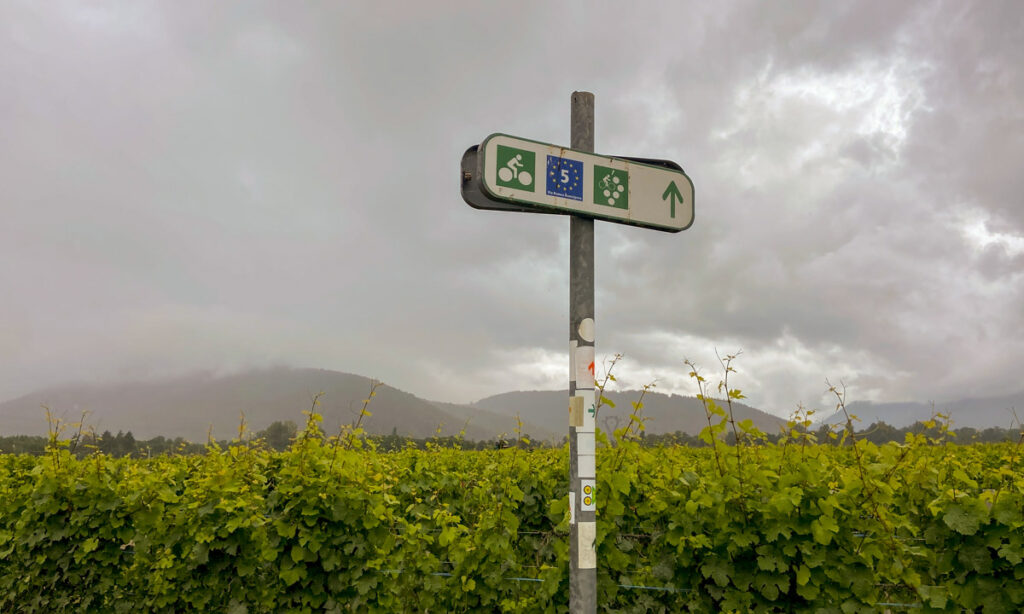
I am glad I took the Beercycling guided tour because we did not need to bikepack our luggage or gear between towns. The van drove our luggage to the hotel each night. I got a flat tire one day, and our driver was able to fix it up quickly for me. One of the women in our trip lost her wallet in Strasbourg. It was found and returned, so our driver drove her back up to retrieve it. Without that amenity, her trip would have been detoured for her to store her bike somewhere, train back to Strasbourg to the embassy, and then train back. Instead, her detour took just a couple hours.
Evan also scheduled tastings at many small tasting rooms that are not open to the public for tastings, so we got to meet directly with the winemakers or brewmasters for tastings.
Part of the fun is being with a guided group of people to drink, play games, and chat with whom you would not normally travel. Evan, our guide, has cycled extensively through this region himself so I never worried about becoming lost amongst the vineyards.
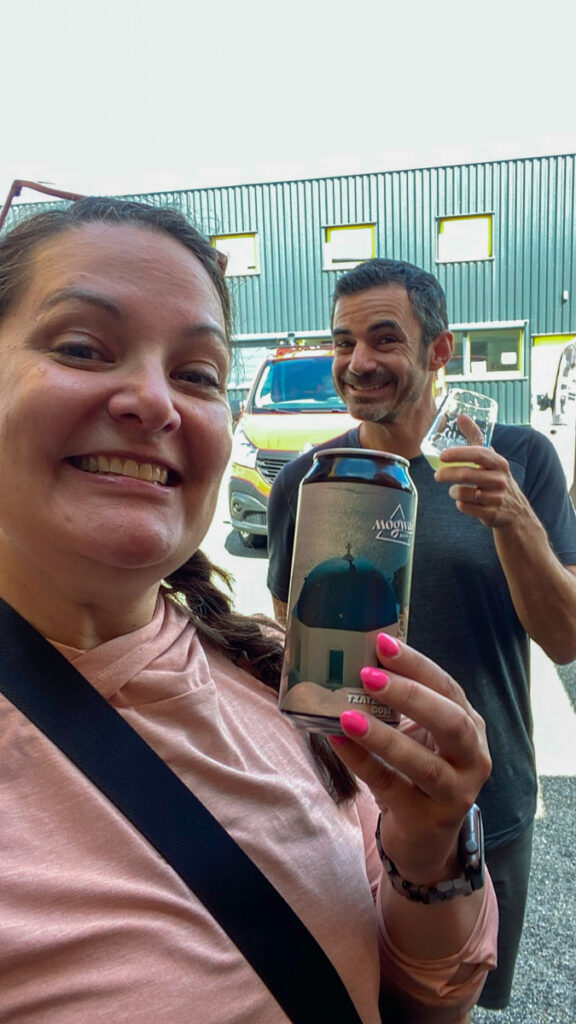
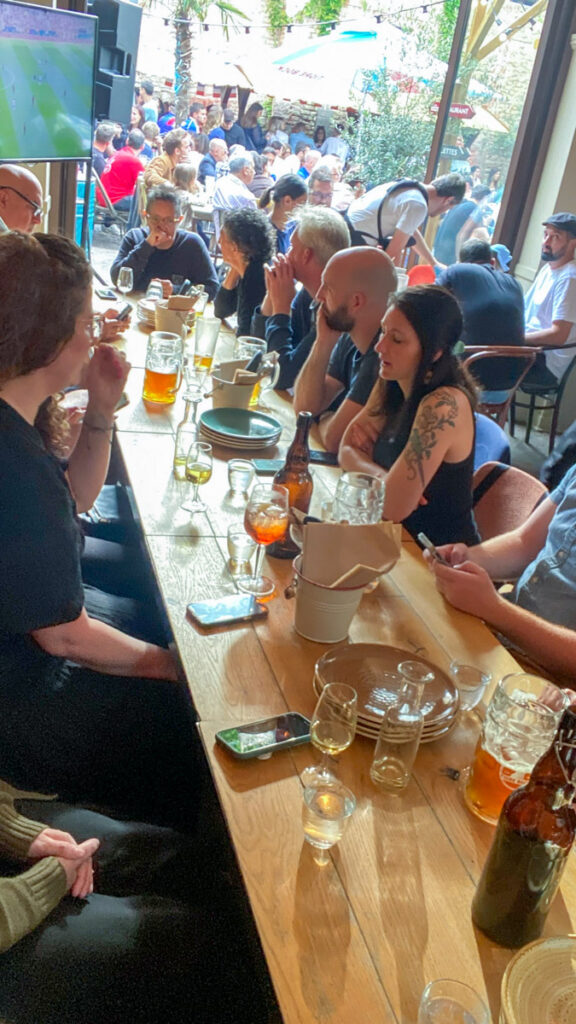
What types of accommodations and meals are provided on a Beercycling tour?
Lodgings and breakfast and lunch are provided daily as part of the tour cost. We stayed in small local 3-star hotels in every city, except Colmar, which was an Ibis Styles hotel. The off season rate at most of the hotels seemed to be $100-$125 per night. The hotels were clean and charming, and most had some sort of evening bar or wine for purchase. Two had indoor hot tubs and saunas as well. I laid out each of the hotels we stayed out in the Alsace cycling itinerary post.
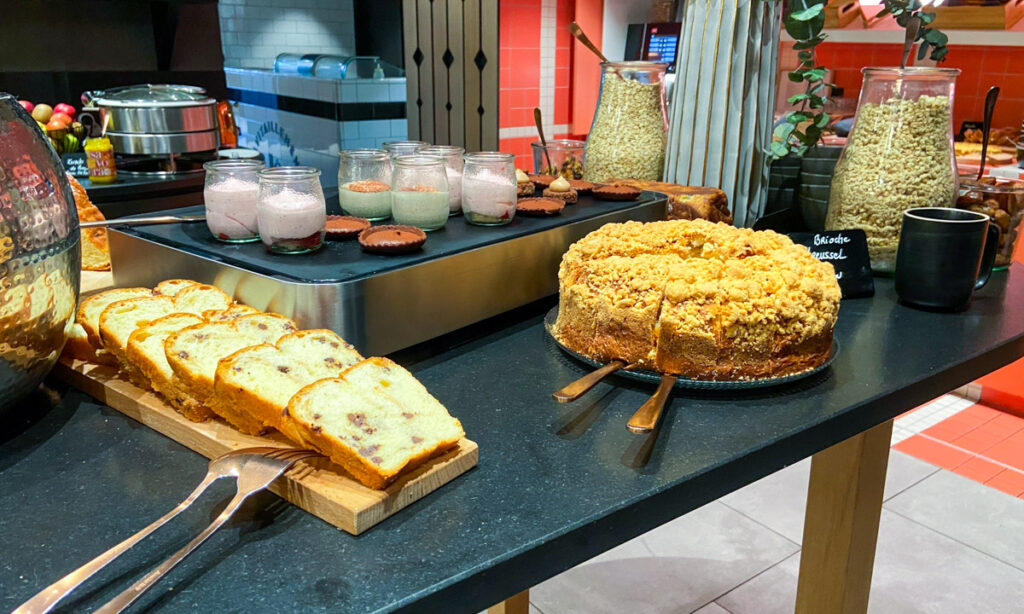
Breakfast at the hotel was included every day. The breakfasts were terrific – a heavy continental style breakfast that you find at most European hotels. Lunch was included every day but our day off. Lunch was usually a baguette sandwich, chips, cookies, and water. Snacks daily were also included, like cookies, chips, apples, etc. for cycling breaks.
If you have food allergies, this trip might be difficult for you. My friend has Celiac and while Evan made sure to have snacks for her, not every restaurant in this region can accommodate food allergies.
Dinners are not provided, although we usually met up for dinner and drinks anyway. In two of the smaller towns, Evan planned group dinners nearby since there were so few restaurants.
The daily beer and wine tastings were also included in the tour price, although any bottle or pint purchases were left up to you.
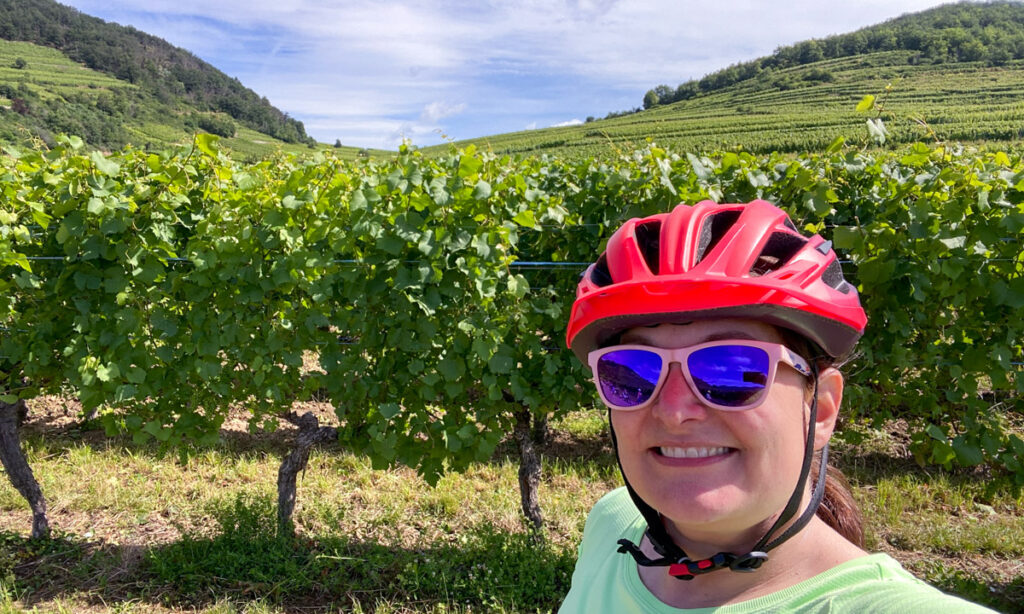
Is it possible to tailor the cycling tour for different fitness levels?
Yes, to an extent. E-bikes were available for a small additional charge. About half of our group rented e-bikes. I’m glad I did because it was less exertion and I was able to enjoy the rides more.
There were hills every day, so the e-bike made it easier to bike the hills. It was never easy, because you still have to pedal, but it was easier.
There was also an option to join the van support each day, or skip optional additional miles. A few people took advantage of this on the last leg of the day’s miles.
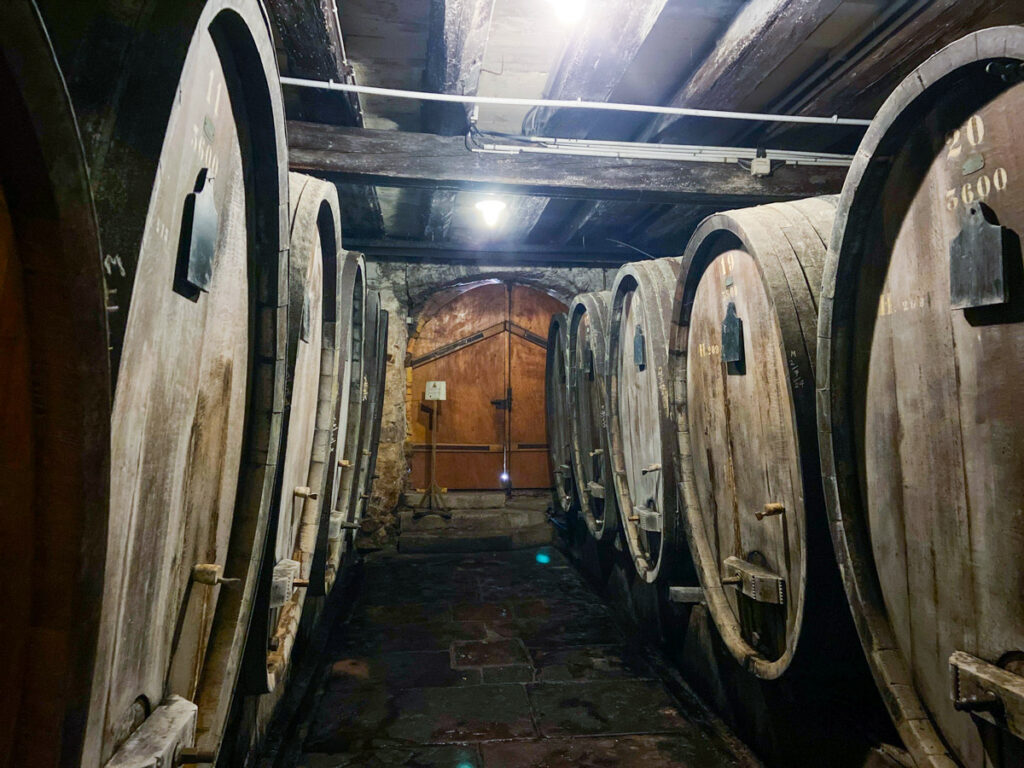
How is the wine experience integrated into the cycling tour?
Before traveling to Alsace, I did not know much about Alsatian wine. Alsace is famous in France for its white wines, including the Grand Cru AOCs Riesling, Gewurztraminer, Pinot Gris and Muscat. Alsatian whites are drier than their German or American counterparts. Alsace also makes stunning crémant sparkling wines, which is champagne-style sparkling white wine. We ended up purchasing several cases to ship home! The wines reminded me of the chasselas white wine I tasted in Lavaux, Switzerland.
Each wine tasting included education about that winery, its wine making process, its history, and a tour of the cellar. We learned a lot about wine, including how difficult it has been lately with Covid and climate change.
You’ll leave this Beercycling tour with a much greater appreciation for Alsatian wines.
How does the Beercycling tour compare to other cycling tours?
I haven’t taken any other cycling tours. However, most of the guests on our tour were either repeat guests or referrals from other guests. One couple had been on five or six tours! My friends know the owner and have been on three tours. The group is small, usually no more than 12 people. The smallness of the group made the tour very personal, and no one was a stranger.
Evan was a terrific guide, as were the support guides he had, Henk and Wendy. They added a lot to the trip from a local knowledge and beer knowledge perspective.
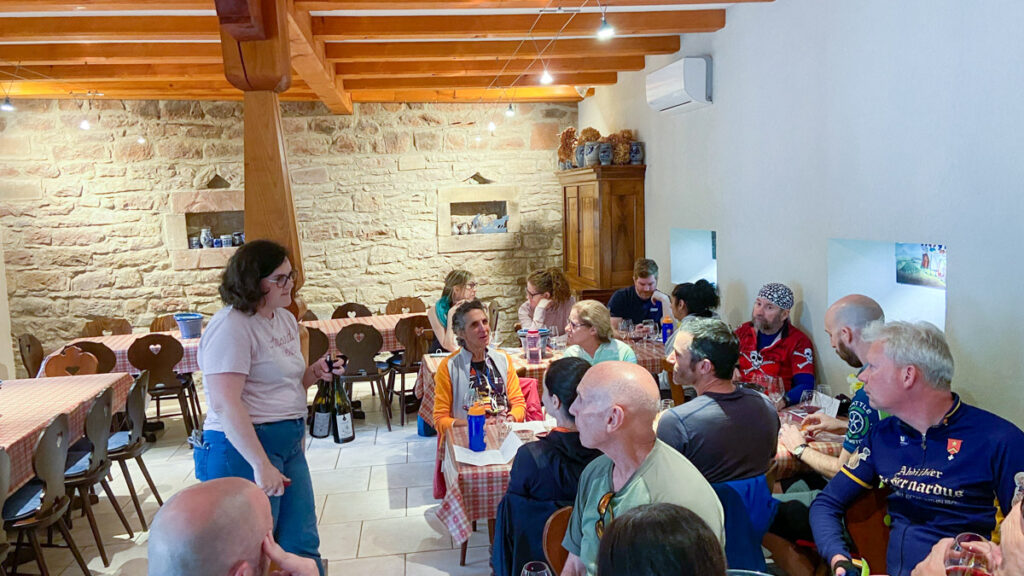
This tour also uses local van support and guides, and supports small local breweries/wineries as well. The current cost for the tour is $2900, which includes nightly accommodations (which would run you 900€ single occupancy for the entire trip), daily breakfasts and lunches, bike rental, daily wine/beer tastings, and van support for the bike. The bike rental included helmet, water bottle, bike lock, panniers, and van support for flats. A search looks like you can rent a bike locally for about 40€ a day, or 210€ for the entire week. I’ve paid much more for shorter travel tours, so I thought this was a bargain at the price.
What’s the best time of year to do this cycling tour of Alsace?
Evan offers this Beercycling tour in late May and early July, although he offers other cycling tours throughout the summer. Other tours include Belgium, Italy, and the Netherlands.
France had a very wet, very late spring the year I took the tour, so we had especially chilly wet weather. A few weeks later was the Olympics, which had unbelievable hot weather, so it really depends.
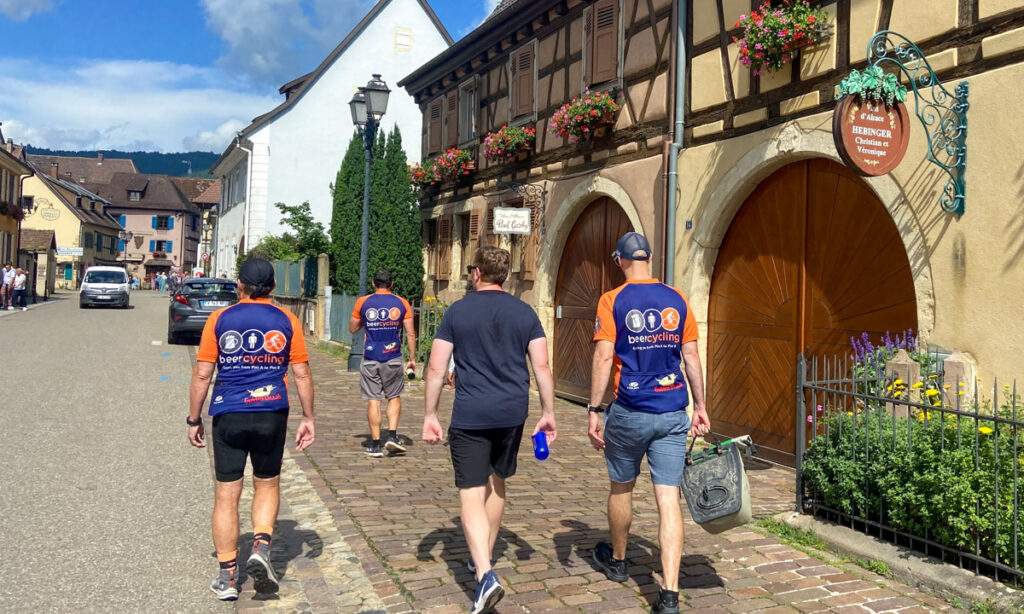
Should I go on a Beercycling tour?
Yes, absolutely! What are you waiting for? Sign up for a tour next summer now. Evan takes tours to Germany, Netherlands, Belgium, Italy, and France.
